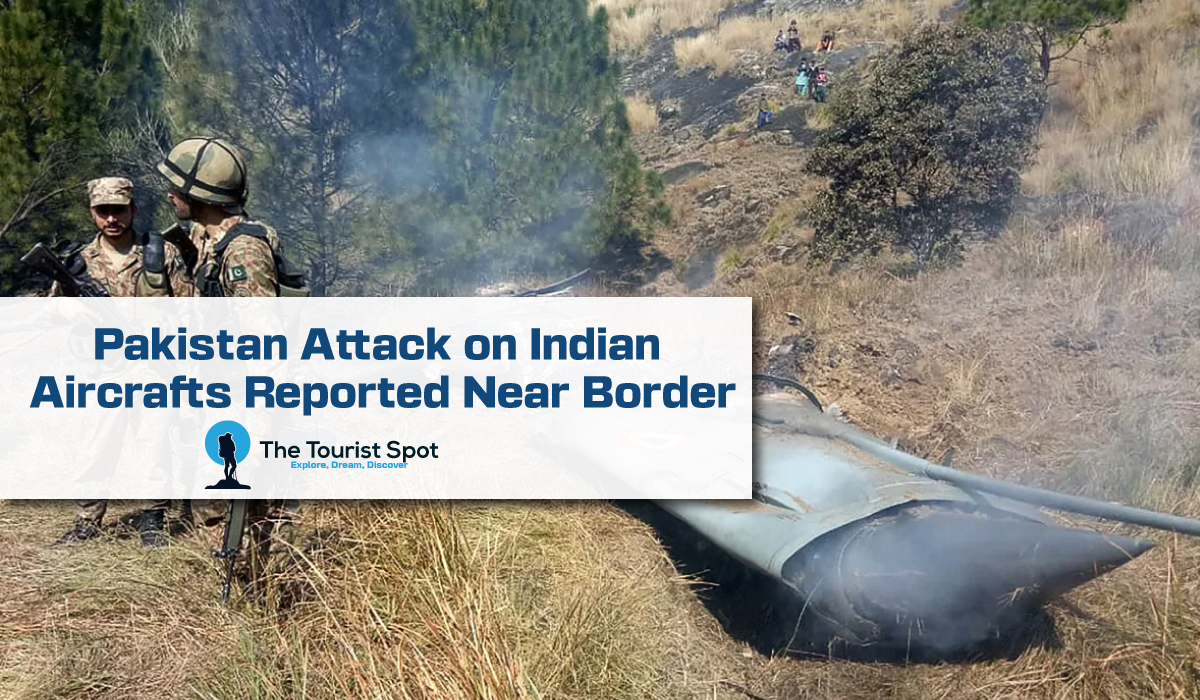In a significant development in South Asian geopolitics, a recent report of a Pakistan attack on Indian aircrafts near the border has sparked fresh concerns among defense analysts, travelers, and diplomatic observers. The incident, which allegedly occurred in the early hours of a border surveillance mission, has reignited long-standing tensions between the two nuclear-armed neighbors.
As both countries work to verify the facts and control the media narrative, here’s a comprehensive breakdown of what is known, what it means for regional stability, and how it could impact international relations and travel in 2025.
The Reported Incident: Overview
According to preliminary details, Indian military aircraft were reportedly conducting routine surveillance near the Line of Control (LoC) when Pakistani air defense systems locked on and launched warning signals. Some unconfirmed sources allege that shots were fired or that drones were intercepted in the airspace.
While neither government has issued a full statement confirming the extent of the Pakistan attack on Indian aircrafts, defense experts believe this may have been a limited engagement or a show of force rather than an act of full-blown aggression.
Key initial details include:
- Location: LoC region between Azad Kashmir and Jammu
- Involved Parties: Indian reconnaissance aircraft and Pakistan’s air defense units
- Timeline: Incident occurred during a routine patrol mission
- Casualties/Damage: No confirmed casualties or downed aircraft at the time of reporting
Government Responses and Statements
As tensions mount, both New Delhi and Islamabad have responded cautiously.
India’s Ministry of Defence has labeled the move as a “provocative engagement,” while reaffirming the country’s right to protect its sovereignty. On the other hand, Pakistan’s Armed Forces claim the response was part of standard border defense procedures and not an unprovoked attack.
Both governments have expressed their intent to avoid unnecessary escalation, but also emphasized their readiness to respond to any further aggression.
What It Means for Regional Peace
This incident marks a serious point of friction between two already strained nations. While previous cross-border air skirmishes have been rare, the potential for miscalculation remains high. Incidents such as this have historically led to:
- Heightened military alertness along borders
- Suspension of diplomatic talks
- Global concern over escalation between two nuclear-armed nations
- Disruption of regional commerce and tourism
If not managed swiftly through diplomatic channels, the Pakistan attack on Indian aircrafts could derail recent peace-building efforts and strain international partnerships.
Impact on Travel and Tourism
For both local and international travelers, the incident could affect travel safety and planning. Governments are closely monitoring the situation and may issue new advisories depending on further developments.
Potential travel impacts include:
- Delay or suspension of flights near border zones
- Tightened airport security and scrutiny of travel documents
- Cancellation of travel plans to high-risk areas
- Advisories against non-essential travel to Kashmir and surrounding regions
Travelers are advised to consult official embassy websites for updates and follow credible news outlets for developments.
International Reaction
The global community has started to weigh in. The United Nations has called for restraint and dialogue, urging both nations to avoid actions that could destabilize the region. The United States, China, and European Union have echoed similar sentiments, offering diplomatic support if needed.
Notably:
- UN Secretary-General has offered to facilitate talks
- US State Department urged both parties to de-escalate immediately
- China has called for peaceful conflict resolution and regional stability
Such responses reflect the serious concern that any armed conflict between India and Pakistan could have implications far beyond South Asia.
Social Media and Disinformation
The internet has seen a surge of content related to the Pakistan attack on Indian aircrafts, much of it unverified or intentionally misleading. Videos, images, and headlines are being shared without confirmation, potentially fueling panic or misinformation.
To avoid falling for disinformation:
- Verify facts with official government or news sources
- Avoid spreading unconfirmed videos or posts
- Follow respected defense analysts and international correspondents
- Support responsible journalism and digital literacy
Both countries have urged their citizens to stay calm and not contribute to online conflict escalation.
What Comes Next?
While the full picture is still emerging, several scenarios are possible:
- De-escalation through Diplomacy – Back-channel talks or mediated communication between military leadership can ease tensions.
- Increased Military Preparedness – Both sides may increase border vigilance and aerial surveillance.
- Public Messaging Campaigns – Governments may engage in controlled messaging to calm public fears and manage political narratives.
For now, the priority remains peace and clarity. The incident, though alarming, need not spiral into a larger conflict if both nations handle it with maturity and transparency.
Conclusion
The Pakistan attack on Indian aircrafts near the border, while not yet fully confirmed in all details, marks a serious moment in 2025’s geopolitical timeline. As tensions rise, it is critical for both regional actors and the international community to remain focused on facts, diplomacy, and de-escalation.
Travelers, residents, and global citizens alike should stay informed through credible sources and avoid sensationalism. Peace is still within reach, but it requires careful handling of every step forward.

